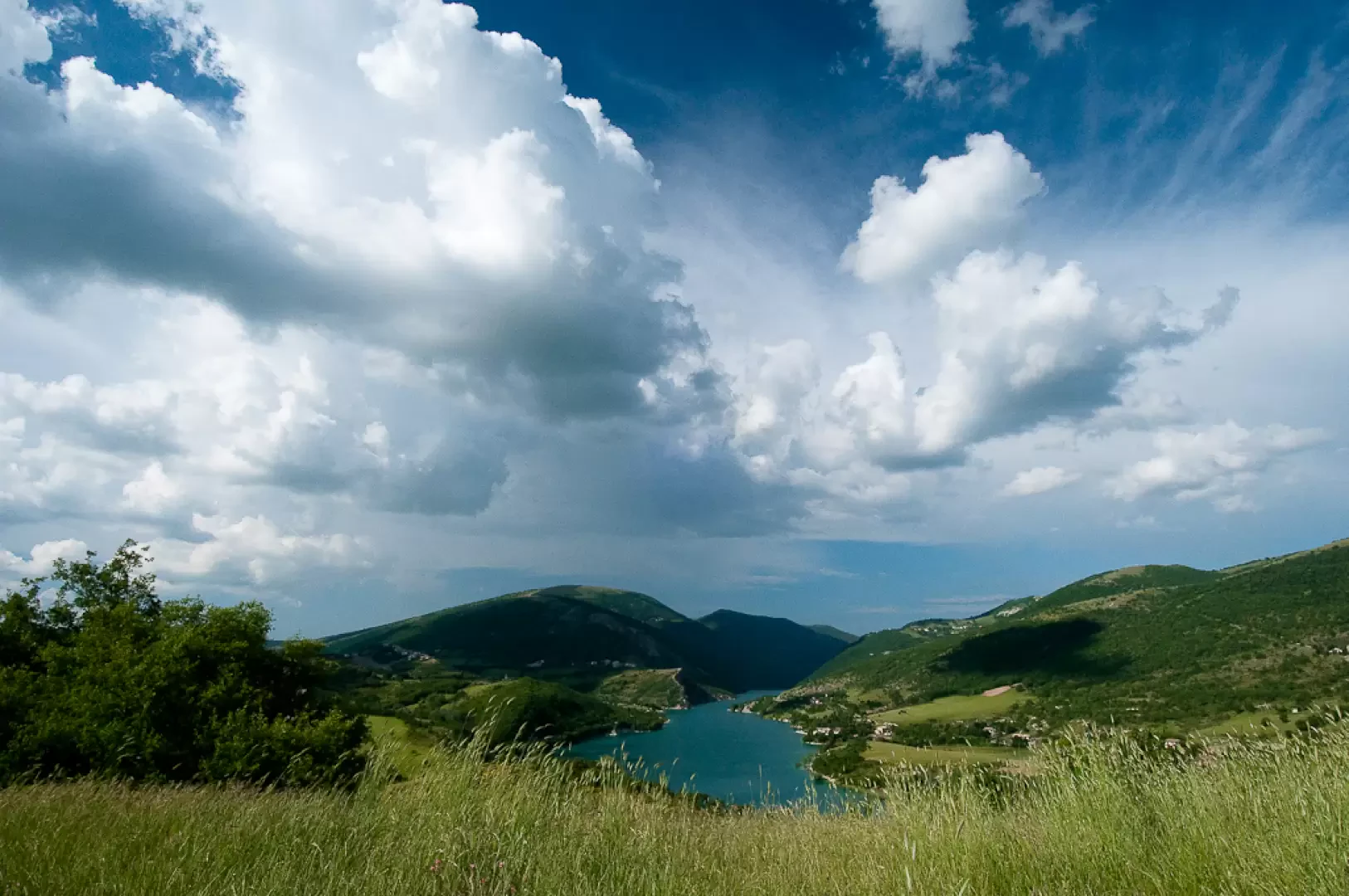Sibillini Mountains Park

Access
The territory of the Sibillini Mountains can be reached via the main roads of Marche and Umbria. It can be accessed mainly from State Road 4 Salaria (from Ascoli Piceno and Norcia) and State Road (from Foligno and Civitanova Marche). Railway and bus networks connect the main urban centres to places such as Visso, Norcia, Castelluccio, Amandola and Ussita. Information points and car parks are available at the visitor centres scattered in and around the park. Access is guaranteed all year round, with the exception of the high altitude roads that may be subject to seasonal interruptions due to snow or instability.
Introduction
The Monti Sibillini National Park extends between Marche and Umbria, embracing part of the provinces of Macerata, Fermo, Ascoli Piceno and Perugia. Established in 1993, the park covers about 70,000 hectares and is one of the most fascinating protected areas in the central Apennines, famous for the presence of more than twenty peaks that exceed two thousand metres, culminating with Mount Vettore (2476 m). This territory encompasses landscapes of great natural and environmental value, shaped by the complex interaction between geological, glacial and karst phenomena, and illuminated by a rich historical, symbolic and cultural heritage linked to the legendary figure of the Sibyl, medieval traditions and ancient rituals that still permeate the local imagination.
.Description
The environment of the Sibillini is characterised by a predominantly calcareous structure, deeply marked by the erosive action of the Quaternary glaciers that left their mark in the glacial cirques of Monte Vettore, Monte Bove and Val di Tela, as well as in the typical 'U' shaped valleys below. The area is home to rare evidence of glacial lakes, including Lake Pilato, the only natural basin in the Marche region and one of the few alpine examples in the Apennines. Karst phenomena are evident in the plains of Castelluccio and in the numerous dolines of the upper Panico Valley, as well as along cliffs and valleys where massive limestone emerges, as in the Tenna and Ambro valleys. Of great scenic importance, the Fiastrone valley is home to the Grotta dei Frati and, upstream of Lago di Fiastra, the Acquasanta valley offers the spectacle of waterfalls and the Grotta dell'Orso, a trace of the past presence of the Apennine bear.
The vegetation of the park varies according to altitude and morphology: from the woods of downy oak, black hornbeam and manna ash up to 1,000 m, to the beech forests that extend up to 1,700 m, followed by extensive high-altitude pastures where rare species such as the martagon lily, Eugenia violet, Apennine edelweiss, gentian and dwarf willow flourish. Of particular interest are the Ragnolo meadows, famous for their abundance of orhids, liliaceae and other valuable botanical species, including the Orsini fritillary and the alpine asters. The park protects unique environments where botanical biodiversity reaches exquisite levels.
The fauna is represented by numerous mammals such as wolf, wild cat, porcupine and roe deer, with recent reintroductions of deer and Apennine chamois. The ornithological heritage includes the golden eagle, goshawk, sparrow hawk, peregrine falcon and the eagle owl; among the galliformes, the southern rock partridge, and among the passerines, species such as the alpine chough and alpine finch. Among the reptiles, there is the Ursini viper, which in the Sibillini finds the northern limit of its range in Italy. Lake Pilato is also home to the Marchesoni chirocephalus, a tiny endemic crustacean with a reddish colouring. These presences make the park a natural laboratory of great value for the conservation of species and the study of biodiversity.
The Sibillini Mountains have always been a crossroads of myths and legends: in the Middle Ages their fame spread throughout Europe as the mysterious realm of fairies, necromancers and spirits. The Grotta della Sibilla and the Lago di Pilato embody the stories of the prophetess and the famous Roman procurator, indissolubly linking the territory to magic tales and ancient rites. The historical and artistic heritage scattered among the villages is very rich, with castles, Romanesque parish churches, sanctuaries, monasteries and works of art, offering visitors a journey through centuries of history and spirituality, from the rough beauty of the Sanctuary of Macereto to that of the Madonna dell'Ambro.
The park's network of trails allows visitors to explore, on foot, on horseback or by bicycle, the entire territory, thanks also to the Grande Anello dei Sibillini (GAS), an itinerary of about 120 km divided into nine stages, designed for complete immersion in nature and culture. For the less experienced, the nature trails allow for short explorations that are also accessible thanks to routes suitable for families and persons with reduced mobility. Dedicated mountain-bike trails, the Grande Via del Parco for those visiting by camper van, car or motorbike, and eight Environmental Education Centres active all year round complete the offer of a diversified enjoyment. The park also promotes typical local products, including pink apples, chestnuts, honey, lentils, roveja, chickling peas, spelt and truffles, the expression of a historic agriculture that is a witness to sustainability and tradition. In the museums and visitor centres, such as the Grotta della Sibilla in Montemonaco or the Duranti Art Gallery in Montefortino, and in the wildlife centres of Castelsantangelo sul Nera and Bolognola, it is possible to explore every aspect of the natural and cultural reality of the Sibillini, also thanks to numerous educational initiatives aimed at schools and visitors of all ages
Information
Area: 700 km²
Altitude: 180 m (minimum) - 2476 m (Monte Vettore, maximum)
Maximum elevation: Monte Vettore (2476 m)
Municipalities concerned: Fiastra, Bolognola, Visso, Ussita, Castelsantangelo sul Nera, Amandola, Arquata del Tronto, Acquacanina, Montefortino, Montegallo, Montemonaco, Pievebovigliana, Cessapalombo, San Ginesio, Fiordimonte, Pievetorina
Year of establishment: 1993
Managing body: Monti Sibillini National Park Authority
Official website: www.sibillini.net